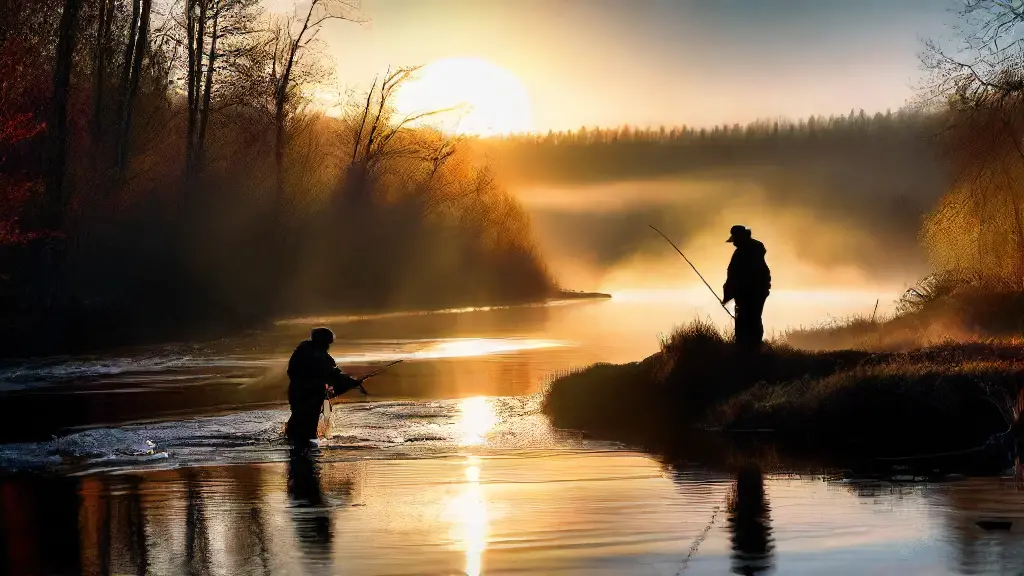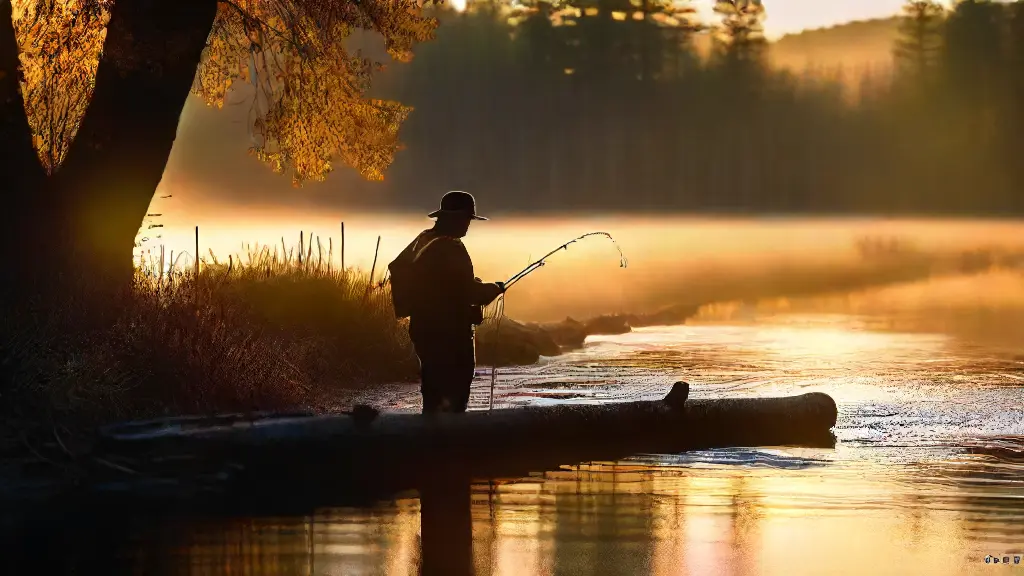How to Fish for Muskie in Rivers

Muskie, often referred to as the fish of a thousand casts, are a prized catch for any angler. Forging a strong connection with these formidable predators demands an intricate understanding of their behavior and habitats, as well as the art of precise lure presentation and strategic location selection.
The ideal water conditions for Muskie revolve around structure, with features such as oxbow bends, undercut banks, and weed beds providing ideal ambush spots for these opportunistic feeders.
Researching and identifying these structure-rich areas will significantly boost your chances of landing a trophy catch. A well-mastered lure retrieval technique is vital when targeting Muskie in rivers that feature dams, habitat-rich undercut banks, oxbow bends, tailwaters, and lake interfaces with riffles and rapids.
Where to Find Muskie Habitat
As fly fishermen often say, you can’t catch what’s not there, making it essential to understand the habits and habitats of the elusive muskie to increase the chances of reeling one in. The thrill of landing this prized catch is not just about the fight, but also about the strategy and preparation that goes into finding the right spot.
Main Channel Structures and Riprap are a great place to start.
These areas tend to have a mix of rock and sand, providing a perfect environment for muskies to hide and ambush prey.
Look for areas with moderate to strong currents, as these fish often congregate near structural changes in the pools.
Submerged Structures such as sunken logs, rocks, and weed beds are also popular hangouts for muskies. These areas provide a sense of security and can be hidden from predators, making them ideal spots for prey to thrive in the pools, holes, seams, backwaters, cutbanks, sandbars, gravel bars, shallow water, deep water, and murky water.

How Do Muskie Use Dams
Rivers have long been a haven for muskie, but the presence of dams has significantly altered their habitats and behaviors. Rivers and streams have always been dynamic environments, with changes in water flow and levels playing a crucial role in shaping the ecosystems.
Dams are remarkable structures that alter the natural flow and chemistry of rivers, making them an attractive habitat for muskie.
The key characteristics of dams that attract these fish include the clarity of the water, the visibility beneath the surface, and the structural features such as rocks, weeds, and underwater ridges.
Muskie are ambush predators that thrive in areas where they can lay in wait for unsuspecting prey.
Dams create the perfect ambush points for these fish, as they offer a combination of structural features, such as rocks, weeds, and underwater ridges, which thrive in the clear water, where visibility is high, water levels are stable, water flow is moderate, and the streams, rivers, estuaries, deltas, and wetlands provide a complex network of habitats.
Facts About Muskie and Dams
- Rivers and streams are dynamic environments with changes in water flow and levels playing a crucial role in shaping the ecosystems.
- Dams create the perfect ambush points for muskie, offering a combination of structural features such as rocks, weeds, and underwater ridges in clear water with high visibility.
- Muskie are ambush predators that thrive in areas where they can lay in wait for unsuspecting prey, making dams an attractive habitat for them.
- The key characteristics of dams that attract muskie include clarity of water, visibility beneath the surface, and structural features such as rocks, weeds, and underwater ridges.
What is Undercut Structure
Riverbanks are often overlooked, yet these seemingly ordinary areas conceal a fascinating world of habitat diversity. The gentle slope of the shore creates a subtle blend of light and shadow, fostering an intricate ecosystem teeming with life.
These undercut structures, shaped by a combination of natural and man-made forces, can be discovered alongside ancient boulders, in the serpentine curves of meandering streams, or nestled amidst the floating lily pads of quiet pools.
As we explore the realms of undercut structures, it becomes apparent that these hidden havens play a pivotal role in the lives of fish, offering shelter, ambush points, and vital resources.
By understanding the formation and characteristics of undercut structures, anglers can unlock the secrets to catching large predators and relishing the thrill of the hunt. In these submerged sanctuaries, meanders of water meander lazily among lily pads, submerged trees, rocks, and boulders, their faces adorned with cabbagehead, coontail, hornwort, and duckweed, as crawdads scuttle across the bottom.
Fishing Oxbow Lakes
As dawn breaks over the countryside, a serene landscape unfolds, hiding a secret world of angling opportunities beneath its tranquil veneer. Oxbow lakes, often overlooked by anglers, hold secrets to reeling in a variety of species, from panfish to muskie.
These unique bodies of water are formed when a meandering river is cut off from its main course, creating a serene and peaceful environment for fish to thrive.
Snails slide silently across the water’s surface, while leeches dart beneath, providing an essential food source for many fish.
The still waters of oxbow lakes also offer a habitat for fish to snip at the water’s surface or dart beneath it.
Fishing oxbow lakes requires a different approach than traditional river fishing. To adapt river fishing techniques for oxbow lakes, fishermen should be prepared to slow their presentation and wait for a snail-paced bite, using techniques such as snipping the line to set the hook, sweeping the fly across the water, and stripping the line to quickly lift the fly out of the water only to drop it again when a fish strikes.
Facts About Oxbow Lakes
- Oxbow lakes are formed when a meandering river is cut off from its main course.
- These bodies of water provide a serene and peaceful environment for fish to thrive.
- Oxbow lakes offer a habitat for fish to snip at the water’s surface or dart beneath it.
- Fishing oxbow lakes requires a different approach than traditional river fishing, involving slower presentation and waiting for a snail-paced bite.
Trolling Tailwaters Techniques
As the water’s edge comes alive with thrashing fish, it’s no secret that muskies are notorious for their cunning nature. When the current is strong and the water is murky, a subtle twitch in a lure can be the difference between a missed strike and a landed catch.
Trolling tailwaters is a unique fishing technique that capitalises on the strong currents found in these locations, making it an excellent choice for targeting muskies.
By understanding how to effectively troll tailwaters, anglers can enjoy a steady stream of strikes and a great catch rate.
Understanding Muskie Behavior in Tailwaters
————————————-
Muskies are remarkably adaptable creatures, able to adjust their feeding patterns and habitats to suit their surroundings. The line floated in tail.
Finding Muskie in Riffles
Riverbank confluences hold secrets that only reveal themselves to anglers willing to adapt to the dynamic waterscape. Muskie inhabit areas where steady flow and adequate cover converge, creating an intriguing challenge for those seeking to find them.
The first step in targeting these fish is understanding the crucial role of structure and cover in river habitats.
Focus on areas where the river ensures a steady flow of water, and where there is adequate cover for muskie to ambush prey, often hidden behind submerged rocks or within lush weed beds. As you float fish down the riffle, it will help you cover a lot of water and present your lure to the fish in a natural way.
| Structure and Cover | Water Flow | Submerged Rocks | Lush Weed Beds |
|---|---|---|---|
| Adequate cover for muskie to ambush prey | Steady flow of water | Hidden behind submerged rocks | Within lush weed beds |
How to Fish Shallow Water
As I venture into the early morning’s crisp silence, the water’s gentle lapping against the shore creates a symphony that echoes the thrill of the hunt. For me, there’s something special about muskie fishing in shallow waters, where the unpredictable nature of their behavior keeps me on my toes and the thrill of a catch is always within reach.
When defining shallow water fishing, it’s simply any area where the water is 12 feet or less deep.
This habitat is crucial for muskie, as it provides the perfect environment for them to thrive during their spawning season, guided by fish finders that lead them to their favorite spots.
In these areas, structure and habitat play a vital role, making it easier to identify hotspots and weedlines that hold secrets to successful catches. Selecting the Right Gear is crucial when fishing structures such as weedlines, edges, and transitions near spawning nurseries with a fish finder and GPS to locate specific charts and maps.
What is the Best Fishing Gear
As the sun rises over the tranquil riverbanks, the excitement of the hunt begins. Creek mouths and mainstem areas are often hotspots for fishing, as they provide a mixture of structure and food sources that attract a wide range of fish species.
Before diving into the specifics of gear selection, it’s essential to understand the unique characteristics of river fishing.
Rivers are dynamic environments with constantly changing water levels, currents, and temperatures, making it crucial to choose gear that can adapt to these conditions.
Understanding your target species is also vital, as different species have distinct preferences when it comes to habitat, food, and cover. For instance, muskie tend to frequent areas with submerged structural elements like vcuts, where they can capitalize on the movement of prey. Novice anglers often get caught up in the thrill of the catch, but it’s crucial to recognize that river fishing requires a thorough understanding of ambush points, vcuts, Lshaped bends, corner holes, creek mouths, tributaries, mainstem, wetland edges, and shorelines, as well as the subtle nuances of undercut banks.
River Fishing
- Rivers are dynamic environments with constantly changing water levels, currents, and temperatures.
- Understanding your target species is vital, as different species have distinct preferences when it comes to habitat, food, and cover.
- Creek mouths and mainstem areas are often hotspots for fishing, as they provide a mixture of structure and food sources that attract a wide range of fish species.
- River fishing requires a thorough understanding of ambush points, vcuts, L-shaped bends, corner holes, creek mouths, tributaries, mainstem, wetland edges, and shorelines, as well as the subtle nuances of undercut banks.
How to Modify Muskie Lures for Better Performance
Trolling Depths for Muskie: Finding the Strike Zone


